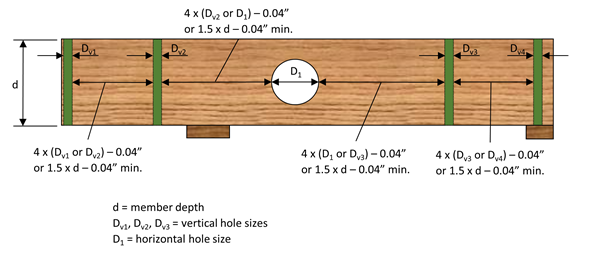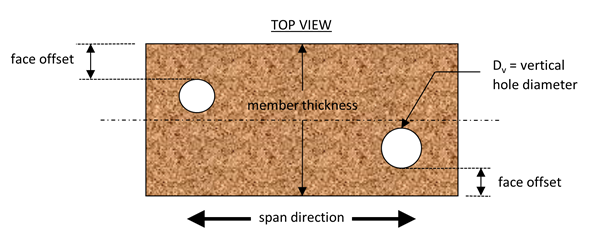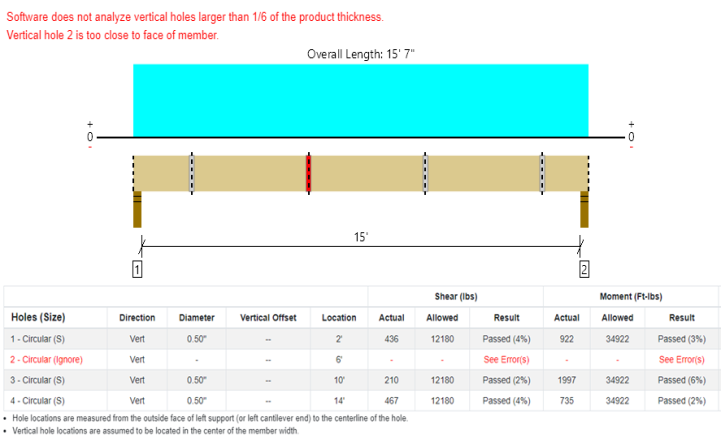Rules for Vertical Holes
Product Limitations
Vertical holes are only allowed in Parallam® PSL and TimberStrand® LSL. Vertical holes are not allowed in other products, such as TJI® joists or commodity lumber.
The product thickness must be greater than or equal to 2 11/16 inches. Vertical holes are not allowed in products less than this thickness.
The product must be single-ply. Vertical holes are not allowed in products using two or more plies.
The product slope must be less than or equal to 0.25/12. Vertical holes are not allowed in products exceeding this slope.
Vertical holes are not allowed in products with tapered end cuts.
Types of Holes
Only circular vertical holes are allowed. Slotted, square, and rectangular vertical holes are not allowed. Vertical holes are classified as small holes.
Size and Number of Holes
The maximum size of vertical holes is 1/6 the product thickness.
The maximum number of vertical holes allowed is four. Five or more vertical holes are not allowed. Horizontal holes do not count towards this number.
Proximity rules
Just like horizontal holes, vertical holes cannot be placed beyond the ends of the member.
The distance between edges of holes is limited according to the figures below:


Hole Design
When a hole design shear and/or moment exceed the product capacity, the hole will fail. In the report holes grid, a failed hole will be tagged as failed and the row for that hole will be in a red font. Also, the graphics will show the hole with its interior color in red.

A hole may pass shear and moment checks but still fail a proximity check. In this case, the hole will also be displayed as red, a proximity constraint message in a red font will be displayed in the report’s header, and the Result column in the grid will indicate this error. The screenshot above shows the hole grid for SCL products.
Lateral Loads
Vertical holes are not allowed for products with lateral wind loads.